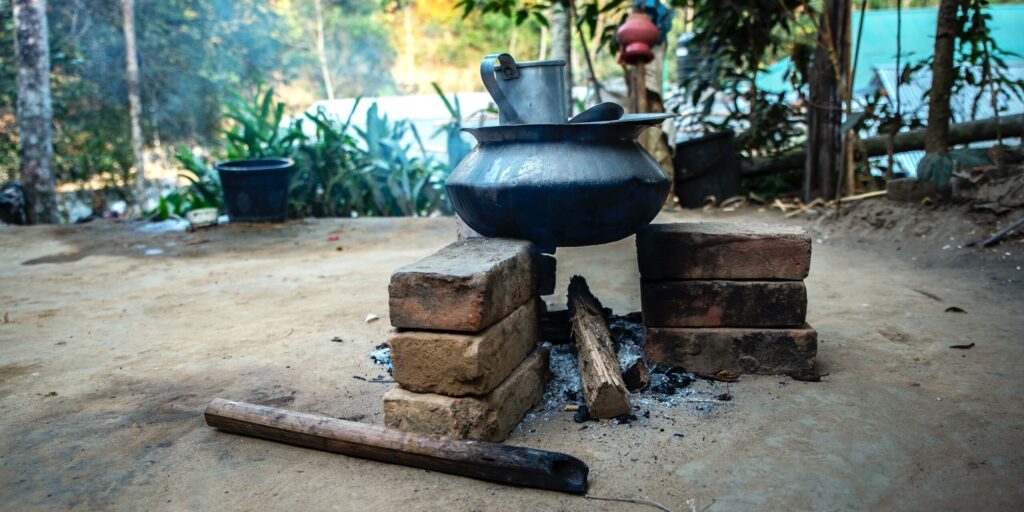Read time 6 minutes
This blog is another opportunity to feel grateful. Thank you, Universe, for continuing to bless me with recovery and health.
Recently, there has been a growing interest in using Teflon-coated pans for cooking. However, the older generations preferred earthen and cast-iron pans which almost lasted forever, and none had to worry about toxin contamination. What exactly happened to those days?

In 2016 I was diagnosed with a rare disease called Isaacs’ Syndrome. Isaacs’ is a neuromuscular health condition that stems from muscle hyperactivity. In the process, I also discovered that I had Lyme disease. Lyme is a bacterial illness that gets transmitted through ticks. Glaucoma also accompanied me. Glaucoma is an eye-related disease that damages the optic nerves. And Membranous Glomerulonephritis is a progressive kidney disease. I faced tremendous issues with my gut, stomach acid, and digestive enzymes. I also developed Irritable Bowel Syndrome (IBS), Diabetes, and Blood Pressure.
And then, every little thing mattered, not only what I ate but also how it was prepared.
Eventually, due to IBS, I became interested in little details. The act described things that could possibly change the course of my journey and help me live better.
It was unconscious eating that gradually became my worst enemy.
Nothing stopped me from having gluten, dairy products, processed foods, and caffeine. My list of food was full of potential triggers for IBS.
People with rare and chronic diseases including IBS need to be cautiously involved in various aspects to manage symptoms. Therefore, I tried getting aware of food safety, including the importance of cookware.
Research indicates that non-toxic cookware is a step towards better health. It reduces exposure to harmful chemicals and supports a cleaner environment.
The Importance of Healthy Cookware Options

I never paid that much attention, before!! As the look, price, and convenience of handling mattered the most.
My perspective changed when I discovered that certain cookware materials can leach harmful chemicals into food, especially when exposed to acidic ingredients or high heat.
During my research, I discovered how our Ancestors traditionally used utensils made of clay and some metals like brass, and copper. These tools were of course in line with their eating habits.
Clay
It almost preserves all the micronutrients present in food. It has great benefits on our immunity keeping a healthy equation with nature. Even the Ayurvedic tradition recommends them.
They are environment-friendly, non-stick, balance pH levels, and are non-toxic. They act as tools to preserve the taste of the food, use less oil, retain nutrition, and distribute heat evenly for easy cooking.
Silver
It has excellent heat conductivity, even better than copper however it’s quite an expensive option.
1) It calms the mood disorder of the food with antibacterial properties.
2) Is effective in boosting our immunity by battling against free radicals and rejuvenating damaged cells.
3) It also, maintains the freshness of the food by protecting against germs, viruses, and bacteria.
According to Ayurveda, it has properties that increase brain capacity.
Copper
It is quite a popular option among professional chefs for several reasons.
1) It is one of the best conductors of heat.
2) It increases the metabolic rate, detoxifies, and regulates blood pressure. It is known to improve stomach-related issues, reduce inflammation, and help kidney function.
3) Copper must be used with proper lining without which it can cause gastro-intestinal problems.
Using a non-lining copper cookware could put me at risk of aggravating my IBS symptoms. Therefore, I ensured the product’s quality was good before use.
Cast Iron
It is good to increase iron content in food. It makes the food low in fat and requires less oil while cooking. There are durable, and non-chemical variants available that work well in high temperatures.
Ceramics
1) They are considered safe with non-toxic and eco-friendly qualities.
2) They have non-stick properties that ensure heat conduction.
3) They are known to have versatile properties, and good options for various cooking methods. They can be used for baking, frying, and boiling.
Stainless Steel
It is an alloy made of iron that contains chromium. It is commonly used in most Indian houses for the benefits it offers.
1) It is extremely durable and versatile and is resistant to rust.
2) It can withstand high temperatures and are easy to maintain.
3) It is known not to react to oil and food acids.
I use this option as it ensures no cookware chemicals enter my food.
Aluminium
It can be a good option used as a cookware.
1) It is a cost-effective, easy-to-handle, and lightweight option used for cooking.
2) The uncoated part of the metal can react with acidic foods, leading to the leaching of aluminium into food.
Nonstick
1) They are easy to use.
2) The risk is aggravated if the cookware is made from polytetrafluoroethylene (PTFE). They are known to release toxic fumes when overheated.
3) In case the cookware is damaged, it can release particles into food. It is important to understand when to replace the nonstick when it shows signs of wear.
I preferred not to use a nonstick as there are healthier alternatives like stainless steel, cast iron, etc available.
There are potential health risks associated with toxic cookware therefore, I became careful with:
1) Risks of the cookware material and how they can be best handled.
2) When to replace the damaged cookware.
3) Opting for safer options instead of compromising on health and exposing to risks. Non-toxic cookware is a tool for promoting the retention of nutrients, enhancing food safety, and healthier meals.
Helpful Tips for Choosing Healthy Cookware

Today it has a lot to do with the presentation and marketing of products. They are made to look so appealing that it’s overwhelming for people to get convinced.
I was amazed at the gleaming of the cookware displays, so eye-catching that one looked better than the other. However, it is important to have the right information and research to choose the right product.
For me, it was looking at the therapeutic qualities of cooking with a dash of creativity. Here are certain tips I followed while selecting non-toxic cookware:
1) Material
I avoided materials like nonstick, aluminium, and copper. I opted for safer options including stainless steel, cast iron, glass, and ceramic.
2) Checked Labels
I read labels to ensure the cookware is free from harmful chemicals.
3) Reliable Brands
I opted for reputed brands as they are expected to maintain transparency and rank safety.
4) Avoid Damaged Products
I avoided using damaged cookware as it leaches harmful substances into food.
Conclusion
Globally, we talk about the good old days when things were better and healthier. However, in the bargain of finding easier methods to save time, we lost a lot. I am talking about ‘a healthy lifestyle‘.
Using non-toxic cookware is very essential for maintaining food safety and overall health. It helps in avoiding harmful chemicals and associated risks for health reasons. Also, aids in nutrient retention and has an environmental impact.
The process for me was a therapeutic experience with a dash of creativity. I started using stainless steel, clay, and ceramic for cooking purposes.
Having said all the above, a lot depends upon our surroundings and factors that fulfill all our daily nutritional needs. However, I eat greens, and the prescribed foods that are cooked in a ‘healthy cookware’.
DISCLAIMER
The views expressed above in this article are the author’s own and do not represent any kind of medical advice.
References:
The Hidden History Baked Into a Cooking Pot – The New York Times (nytimes.com)
10 best cookwares & utensils for good health – Immunosciences


